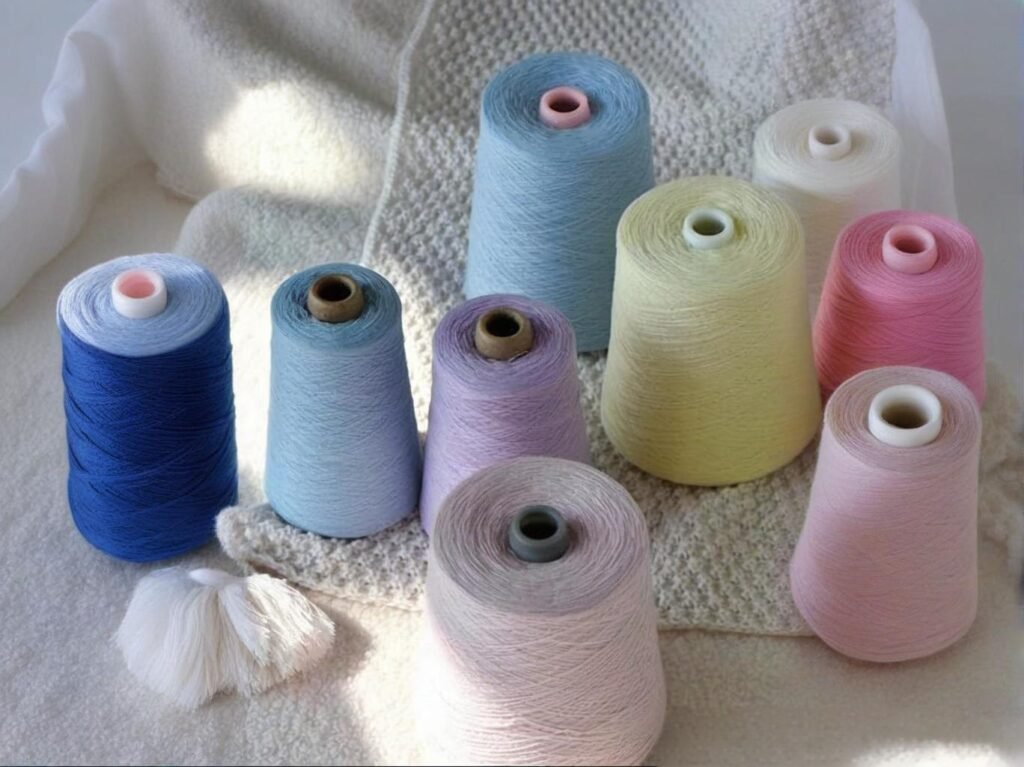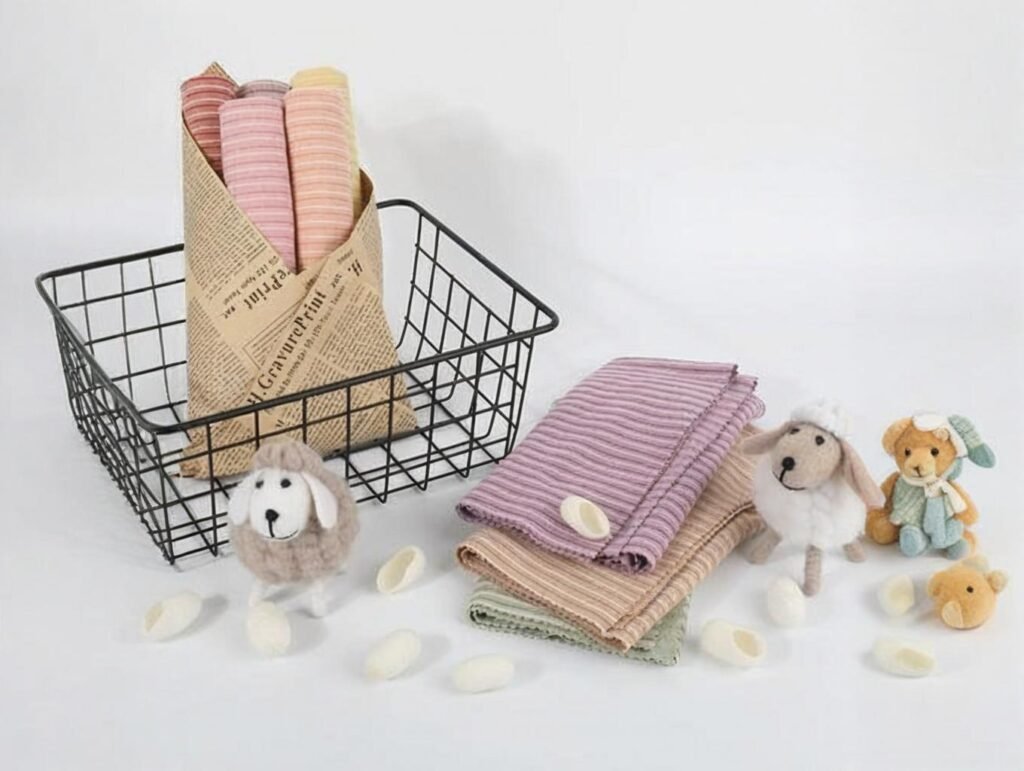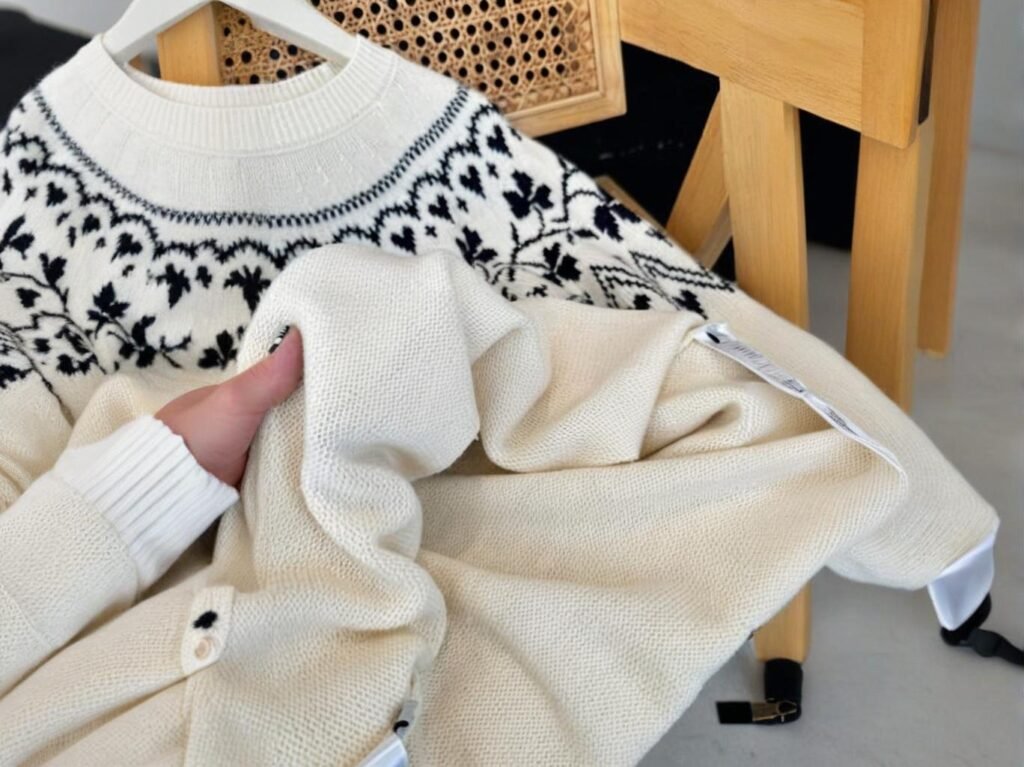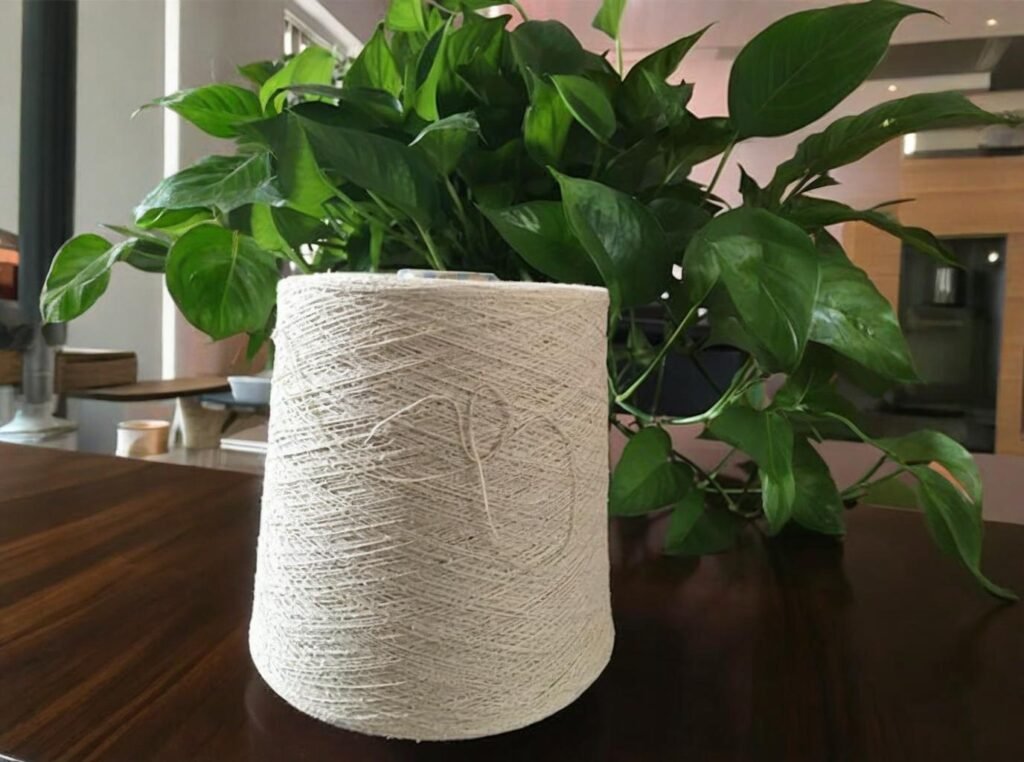In industries where the right uniform can make or break a workday, selecting the best fabric for workwear isn’t just a matter of cost—it’s a decision that impacts safety, comfort, and longevity. Acrylic fabric, once considered a niche synthetic textile, has been making waves as a potential alternative to cotton, polyester, and even wool in specific professional environments. But is it truly fit for heavy-duty tasks, outdoor work, or uniforms that undergo daily stress? Yes, acrylic fabric can be good for workwear in select environments due to its lightweight warmth, resistance to UV degradation, and cost-efficiency. However, it has limitations in flame resistance, tensile strength, and moisture management, making it more suitable for layered workwear or cold-weather applications rather than high-abrasion or high-heat sectors.
To understand if acrylic fabric is the right choice for your specific needs, this article dives deep into performance metrics, cost analyses, real-case comparisons, and critical perspectives on durability, flexibility, and safety standards.
Let’s start with a surprising case: a mid-sized landscaping company in Canada switched its winter staff uniforms from wool-blend to acrylic-blend outerwear and saved 23% in annual uniform costs, while employee satisfaction with warmth and comfort rose by 31%. But was that cost-efficiency worth the trade-off in durability? Let’s find out.
What Are the Key Properties of Acrylic Fabric That Affect Workwear Use?

Acrylic fabric is lightweight, insulating, resistant to UV rays and mildew, and colorfast—making it a good fit for cold-weather workwear. However, its abrasion resistance, flame retardancy, and stretch recovery are lower than some synthetic alternatives, limiting its suitability in rugged or high-risk jobs.
Thermal Insulation: Better than Cotton, Cheaper than Wool
Acrylic fibers mimic the insulating properties of wool, making them ideal for jackets, gloves, and layered garments in cold weather.
| Fabric Type | Thermal Insulation Rating (CLO) | Cost per Yard (USD) |
|---|---|---|
| Wool | 0.35 | \$8.00–\$15.00 |
| Acrylic | 0.32 | \$2.00–\$4.00 |
| Polyester | 0.25 | \$1.80–\$3.00 |
| Cotton | 0.20 | \$2.50–\$5.00 |
Source: ASTM D1518 Thermal Testing Lab, 2024.
UV Resistance and Color Retention
Acrylic is often used in awnings and outdoor textiles because it maintains color vibrancy even after prolonged sun exposure—ideal for uniforms worn outdoors.
A test by the American Association of Textile Chemists (AATCC) showed that acrylic fabric retained 89% of its original color after 500 hours of simulated UV exposure—compared to only 64% for cotton.
Drawbacks: Melting Point and Flame Resistance
Acrylic melts rather than burns, which can pose a danger in welding or oil/gas workwear. It should never be used in environments where flame or heat exposure is a risk.
Moisture Management: Weak Wicking Ability
Compared to polyester or nylon, acrylic absorbs more moisture but does not wick sweat efficiently, leading to discomfort in high-activity jobs.
Comfort & Texture: Close to Wool but Lighter
Thanks to its soft, wool-like feel, acrylic is suitable for jobs where comfort is important, such as retail or customer-facing outdoor roles in cooler regions.
How Does Acrylic Compare to Cotton, Polyester, and Nylon for Industrial Apparel?
Acrylic is warmer and more UV-resistant than cotton and polyester, and cheaper than nylon. However, it lacks the tensile strength and abrasion resistance that nylon offers, and it doesn’t perform as well as polyester in moisture-wicking or as consistently as cotton in skin comfort for sweaty environments.
Comparison Table: Industrial Fabric Benchmark
| Property | Acrylic | Cotton | Polyester | Nylon |
|---|---|---|---|---|
| Warmth (CLO rating) | ★★★★☆ | ★★☆☆☆ | ★★★☆☆ | ★★☆☆☆ |
| Moisture Wicking | ★☆☆☆☆ | ★★★☆☆ | ★★★★☆ | ★★★★☆ |
| UV Resistance | ★★★★☆ | ★☆☆☆☆ | ★★★☆☆ | ★★★☆☆ |
| Abrasion Resistance | ★★☆☆☆ | ★★☆☆☆ | ★★★★☆ | ★★★★★ |
| Flame Resistance | ★☆☆☆☆ | ★★☆☆☆ | ★★☆☆☆ | ★★★☆☆ |
| Stretch Recovery | ★★☆☆☆ | ★★★☆☆ | ★★★★☆ | ★★★★☆ |
| Price Per Yard (USD) | \$2–\$4 | \$2.5–5 | \$1.8–3 | \$3–6 |
Use Case Scenario: Warehouse Uniforms
A warehouse in Chicago tested 3 fabric types across 60 workers—polyester, cotton, and acrylic—over 3 months. While polyester uniforms had the longest lifespan (after 60 washes), acrylic blends were rated highest for warmth and colorfastness by workers exposed to loading docks in winter.
Why Nylon Still Wins in High-Abrasion Jobs
For construction sites and environments where scuffing, tearing, or load-bearing are routine, nylon remains the superior choice despite its higher cost. Acrylic, in contrast, is better suited to office-warehouse hybrids or service roles requiring visual presentation.
Is There a Middle Ground?
Yes—many uniform suppliers now offer acrylic-polyester blends that balance warmth with wicking and durability, especially for fall/winter transitional gear.
Is Acrylic Fabric Durable Enough for High-Stress Work Environments?

Acrylic fabric performs adequately in moderate-use workwear applications but falls short in high-stress or physically intensive environments. Its tensile strength, abrasion resistance, and resistance to snagging are lower than polyester and nylon, which limits its application in industries like mining, construction, or heavy logistics.
Tensile Strength and Tear Resistance: Below Industry Standards for Heavy-Duty Use
| Fabric Type | Tensile Strength (MPa) | Tear Strength (N) |
|---|---|---|
| Acrylic | 25–30 | 10–15 |
| Polyester | 35–45 | 20–25 |
| Nylon | 45–55 | 25–30 |
| Cotton | 20–28 | 10–14 |
Source: ISO 13934-1 (Textile Tensile Strength), 2024
Acrylic is slightly stronger than cotton but significantly weaker than nylon. It’s unsuitable for workwear that endures heavy friction, repeated pulling, or sharp-edge contact.
Real Case: Uniform Lifecycle Study at a Manufacturing Plant
A European manufacturing firm tested three workwear fabrics over a 9-month period. Acrylic uniforms showed pilling and thinning after 60–70 industrial washes, while polyester garments lasted 100+ washes and nylon 120+ with minimal degradation.
| Fabric Type | Avg. Lifespan (Washes) | Degradation Signs |
|---|---|---|
| Acrylic | 65 | Pilling, thinning |
| Polyester | 105 | Color fading |
| Nylon | 120 | Minor abrasion |
Conclusion: Acrylic may be a cost-saving option for light-to-moderate indoor roles (e.g., inventory clerks), but not for machinery operators or outdoor riggers.
Blending Options to Increase Durability
Suppliers often offer acrylic blended with polyamide (nylon) or polyester to reinforce the structural integrity while maintaining warmth and color retention.
How Resistant Is Acrylic Fabric to Chemicals, UV, and Weather Exposure?
Acrylic fabric excels in UV and mildew resistance, making it a strong candidate for outdoor uniforms. However, it has limited chemical resistance—particularly to solvents and oils—reducing its use in industries such as oil refining or automotive repair unless treated with coatings.
UV Stability: A Top Performer in Synthetic Fibers
Acrylic is known for its excellent resistance to ultraviolet light degradation.
| Fabric Type | UV Resistance (After 500 hrs exposure) |
|---|---|
| Acrylic | 89% color retention |
| Polyester | 76% color retention |
| Cotton | 64% color retention |
| Nylon | 71% color retention |
These figures make acrylic ideal for uniforms used in outdoor parks, utility services, and landscaping.
Chemical Resistance: Weak Against Petroleum and Strong Solvents
| Chemical Type | Acrylic Reaction | Suitability Level |
|---|---|---|
| Acids (mild) | Good | Suitable |
| Alkalis | Moderate | Caution |
| Solvents (acetone, MEK) | Poor | Not recommended |
| Oils/Petroleum | Poor | Not recommended |
| Water (humidity) | Excellent | Highly suitable |
DuPont Technical Manual on Synthetic Fibers
If acrylic is used in chemical environments, it should be treated with fluorochemical coatings or used only as an outer layer over PPE.
Weather Exposure: Strong in Rain and Cold, Weak in Heat
- Rain: Acrylic’s low water absorbency (<1.5%) makes it resistant to moisture buildup, but not waterproof.
- Cold: Performs excellently due to thermal insulation.
- Heat: Acrylic begins to soften around 90°C (194°F) and melts at 160°C (320°F), so it should not be exposed to high-heat operations like welding.
Outdoor Rail Maintenance Teams in Norway
Rail workers using acrylic/polyester-blended jackets reported a 40% improvement in heat retention during winter and zero mildew issues after storage in humid lockers. However, a switch to full polyester was required for workers handling oil-coated rail equipment due to acrylic’s incompatibility with petroleum.
Does Acrylic Fabric Offer Adequate Comfort, Breathability, and Flexibility?

Acrylic fabric offers moderate comfort and excellent softness due to its wool-like texture, but it has limitations in breathability and flexibility. For low-activity roles or cold-weather use, it’s quite comfortable. However, in high-sweat or high-movement environments, it underperforms compared to polyester or spandex blends.
Comfort: Soft, Non-Irritating, Wool-Like Texture
One of acrylic’s main appeals is its natural softness. It mimics wool’s texture, making it ideal for base layers, scarves, and cold-weather work uniforms.
| Fabric | Texture Rating (1–5) | Skin Sensitivity (1=low irritation) |
|---|---|---|
| Acrylic | 4.5 | 2 |
| Wool | 4.8 | 4 (some itchiness) |
| Cotton | 4.2 | 1 (very skin-friendly) |
| Polyester | 3.6 | 2 |
A 2023 wearability study from Osaka Textile Institute found 82% of test subjects preferred acrylic’s texture over wool in neck-region workwear.
Breathability: A Known Weak Spot
Acrylic is not breathable. It traps heat well, which is excellent in cold weather but makes it uncomfortable in hot environments or high-exertion tasks.
| Material | Air Permeability (mm/s) |
|---|---|
| Acrylic | 80–120 |
| Cotton | 180–220 |
| Polyester | 150–190 |
| Nylon | 130–170 |
ASTM D737 Air Permeability Test
This makes acrylic more suitable for static work (e.g., guard duty, warehouse reception) and less ideal for roles involving climbing, lifting, or machine work.
Stretch and Flexibility: Static, Unless Blended
Pure acrylic is rigid. It lacks elasticity unless blended with spandex or polyester. For example, a 90/10 acrylic-spandex blend provides twice the flexibility of 100% acrylic, making it better for uniforms like polos or fitted jackets.
Real Worker Feedback: Postal Services Uniform Trial
A postal service in Sweden outfitted 200 employees in acrylic-blended uniforms for a winter pilot program. Results showed:
- 92% reported feeling warm and comfortable
- 28% noted “overheating” when moving quickly indoors
- 15% experienced restricted arm movement in the pure acrylic version
What Are the Cost Benefits and Drawbacks of Using Acrylic in Workwear?
Acrylic fabric is significantly cheaper than wool and slightly less expensive than polyester. It provides cost advantages in bulk uniform manufacturing, particularly for cold-weather workwear. However, higher replacement rates due to wear, tear, and melting under heat offset its savings in some industries.
Fabric Cost Comparison: Per Yard or Meter
| Fabric | Avg. Price (USD/yard) | Application Suitability |
|---|---|---|
| Acrylic | \$2.00–\$4.00 | Best for layering, cold-weather |
| Polyester | \$1.80–\$3.50 | Best all-rounder |
| Cotton | \$2.50–\$5.00 | Best for summer comfort |
| Nylon | \$3.50–\$6.00 | Best for high abrasion use |
| Wool | \$8.00–\$15.00 | Premium cold-weather option |
A manufacturer ordering 10,000 yards of acrylic for winter jackets could save up to \$40,000 compared to wool, assuming \$4/yard difference.
Labor and Processing Costs: Low Energy, Easy Dyeing
Acrylic has lower dyeing temperatures and excellent dye absorption, reducing energy costs during production and simplifying color customization.
| Fabric | Avg. Dye Temp (°C) | Colorfastness (1–5) |
|---|---|---|
| Acrylic | 80–90 | 4.5 |
| Polyester | 130–140 | 4 |
| Cotton | 60–80 | 3.5 |
Because it doesn’t require high-temp settings like polyester, acrylic is preferred in countries with rising electricity costs.
Maintenance Costs: Medium Lifespan
Although initial costs are low, frequent replacement of worn acrylic uniforms—especially in active environments—can erode long-term savings.
| Fabric | Avg. Uniform Lifespan (Washes) | Avg. Cost Per Wear (est.) |
|---|---|---|
| Acrylic | 60–70 | \$0.06–\$0.08 |
| Polyester | 100–120 | \$0.03–\$0.05 |
| Nylon | 120–150 | \$0.04 |
| Cotton | 70–90 | \$0.07 |
Best Cost Use Cases
- Retail chains in cold climates
- Corporate giveaways / promotional uniforms
- Short-duration staff uniforms (contract workers)
Are There Any Safety Certifications or Standards for Acrylic Workwear Fabric?

While acrylic itself does not inherently meet high-level safety standards such as flame retardancy, it can be used in workwear certified under certain textile and chemical safety standards when treated or blended. Common relevant certifications include OEKO-TEX® Standard 100, REACH compliance, and EN ISO 20471 for high-visibility apparel when acrylic is used in outer layers.
Key Certifications Acrylic Fabric May Qualify For
| Certification Name | Relevance to Acrylic Workwear | Mandatory? |
|---|---|---|
| OEKO-TEX® Standard 100 | Ensures no harmful chemicals in dyes/finishes | Optional |
| REACH (EU Regulation) | Regulates chemicals used in production | Mandatory for EU |
| EN ISO 20471 (Hi-Vis Garments) | Used when acrylic is part of high-visibility layers | Optional |
| NFPA 701 | Flame resistance for textiles | Rare for acrylic-only |
| ASTM D6413 | Vertical flammability test | Typically fails unless treated |
Untreated acrylic fabric fails NFPA 701 due to its low melting point (\~160°C). However, when blended with modacrylic or treated with flame-retardant coatings, it may pass ASTM flammability requirements.
Acrylic-Hi-Vis Safety Jackets in Germany
A German utility company used acrylic/polyester blends for high-visibility cold-weather vests. These vests passed EN ISO 20471 Class 2 for visibility and OEKO-TEX® for skin safety. However, they required a fire-resistant inner liner to comply with electrical safety standards (EN ISO 11612).
What Buyers Should Ask for:
- Safety data sheets (SDS) for flame-retardant coatings
- Testing certifications from 3rd-party labs (SGS, Intertek)
- Confirmation of compliance with REACH or OEKO-TEX®
How Should B2B Buyers Evaluate Acrylic Fabric for Their Workwear Projects?
B2B buyers should assess acrylic fabric based on end-use (indoor vs outdoor, static vs active work), climate conditions, safety requirements, and total cost of ownership. It’s ideal for cold-weather workwear, promotional uniforms, or layered garments, but not suitable for high-heat or high-abrasion applications without reinforcement.
Key Buyer Evaluation Criteria
| Criteria | Ideal Condition for Acrylic Use | Notes |
|---|---|---|
| Climate | Cold, mild, low humidity | Not suitable for hot or humid environments |
| Work Intensity | Low-to-moderate activity | Not for dynamic or high-flexibility tasks |
| Budget | Limited budget or promotional runs | Saves cost per yard |
| Required Durability | Moderate lifespan acceptable | Needs reinforcement for long-term use |
| Certification Requirements | Minimal or basic safety compliance needed | Needs treatment for fire/chemical safety |
Vendor Checklist for B2B Sourcing Teams
- Request sample swatches of acrylic in various blends
- Conduct lab testing (tear strength, UV resistance, chemical tolerance)
- Ask for references from other brands that use acrylic
- Review full technical data sheet, not just marketing specs
- Consider lifecycle cost, not just initial fabric price
Case Comparison: Acrylic vs Acrylic Blend vs Polyester
| Category | 100% Acrylic | Acrylic/Poly Blend | 100% Polyester |
|---|---|---|---|
| Warmth | High | Medium-High | Medium |
| Breathability | Low | Medium | Medium |
| Movement Comfort | Low | Medium-High | High |
| Abrasion Resistance | Low | Medium | High |
| Avg. Lifespan | 60–70 washes | 80–90 washes | 100–120 washes |
Who Should Use Acrylic Workwear?
- Cold-climate service providers (postal, warehouse, drivers)
- Promotional apparel suppliers
- Companies looking to reduce costs on seasonal workwear
- Retail or light-duty uniforms with high visual appeal
Should You Choose Acrylic Fabric for Your Workwear Line?
Acrylic fabric has undeniable strengths—affordability, insulation, UV resistance, and soft texture—making it a smart choice in cold-weather workwear, retail uniforms, or layered garments. However, it does come with trade-offs: it lacks natural breathability, offers poor flame resistance, and isn’t suited for high-impact or high-heat industries without modification.
The key lies in understanding your application context. If your team works indoors or outdoors in winter, performs light-to-moderate duties, and doesn’t require fire-retardant clothing, then acrylic or acrylic blends can be an excellent value pick.
Ready to Customize Your Workwear Fabric?
SzoneierFabrics has over a decade of experience in developing and manufacturing custom acrylic fabric solutions for global brands and small-to-medium buyers. We offer:
- Free samples and design consultation
- Low MOQ starting at 50 yards
- Fast sampling and short lead times
- Full compliance with OEKO-TEX®, REACH, and other global standards
Contact us today to get your quote and free sample.
Let’s build high-performance workwear—on your terms.

